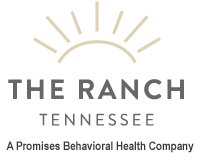Experiencing chronic pain can be challenging and overwhelming, particularly for those in recovery from alcohol addiction treatment or drug addiction. When people are sober, they may feel the urge to rely on pain medication to alleviate their symptoms, which could potentially lead to relapse. That being said, dealing with chronic pain in recovery is possible. Learning how to handle chronic pain while sober can help individuals recover long-term.
Chronic pain can make alcohol addiction treatment difficult, but developing a pain management plan that doesn’t compromise sobriety is essential. Reach out to one of our professionals at Promises Recovery Ranch to develop a strategy that works for you. Call 1.844.876.7680 to learn more about alcohol addiction treatment and start feeling better tomorrow.
How to Navigate Chronic Pain and Recovery
Managing pain can be particularly difficult when going through substance abuse recovery. However, there are ways to handle chronic pain while staying sober effectively. Here are strategies for managing chronic pain and remaining committed to alcohol addiction treatment.
Understand the Nature of Chronic Pain
Chronic pain is a widespread condition affecting many people in the U.S. It is typically described as pain lasting longer than three months. Various factors, such as injuries, illnesses, and aging, can cause chronic pain. It can impact a person’s daily life, making it challenging to perform simple tasks such as walking, sitting, and sleeping.
The first step in handling chronic pain in recovery is to understand the nature of the pain. You should consult your healthcare provider to identify the underlying cause of the pain and develop an individualized treatment plan.
Explore Alternative Therapies
It may be tempting to rely on pain medication to alleviate chronic pain. However, as mentioned earlier, it could potentially lead to relapse when in recovery. Therefore, exploring alternative therapies to manage the pain is essential.
Alternative therapies include physical therapy, acupuncture, massage therapy, and chiropractic care. These therapies aim to relieve pain by promoting the body’s natural healing process. You should always consult the healthcare provider to identify the best treatment.
Stay Active
Staying active is a great way to manage chronic pain. Regular exercise can help reduce pain and stiffness by releasing endorphins that act as natural painkillers. Engaging in low-impact exercises such as walking, yoga, or swimming is an excellent start. You should always consult with your healthcare provider before starting any exercise program.
Practice Mindfulness
Mindfulness meditation is a technique that can help reduce the perception of pain. It involves being present without judgment and focusing on your breath. Mindfulness meditation is a useful tool in managing chronic pain.
Several mindfulness meditation techniques can help you reduce pain and increase your ability to cope with it. Various online mindfulness resources such as apps, podcasts, and guided meditations are available online.
Create a Support System
Creating a support system is essential in handling chronic pain in recovery. It can be challenging to manage pain alone, and having people that support you can make a significant difference. Your support system can include family members, friends, healthcare providers, and support groups.
Joining a support group or attending counseling sessions can provide you with valuable support and strategies to manage chronic pain. Peer support can also help you feel less isolated and more empowered to cope with pain.
Find Relief Today with Help from The Ranch
At Promises Recovery Ranch, we help people overcome addiction and co-occurring mental health issues. We provide comprehensive addiction treatment programs tailored to meet the individual’s needs.
Our team recognizes the challenges of living with chronic pain. We offer alternative therapies such as yoga, equine therapy, and mindfulness practices to help manage pain without relying on medication. Our experienced healthcare providers understand the complex nature of addiction and chronic pain and provide a non-judgmental, supportive environment to assist people in recovery.
If you or a loved one is struggling with addiction and chronic pain, contact The Ranch to learn about our addiction treatment programs and how we can help. Our admissions team is available 24/7 to answer your questions and offer support. Find out what sets us apart. Call us today at 1.844.876.7680 or complete our online form.

